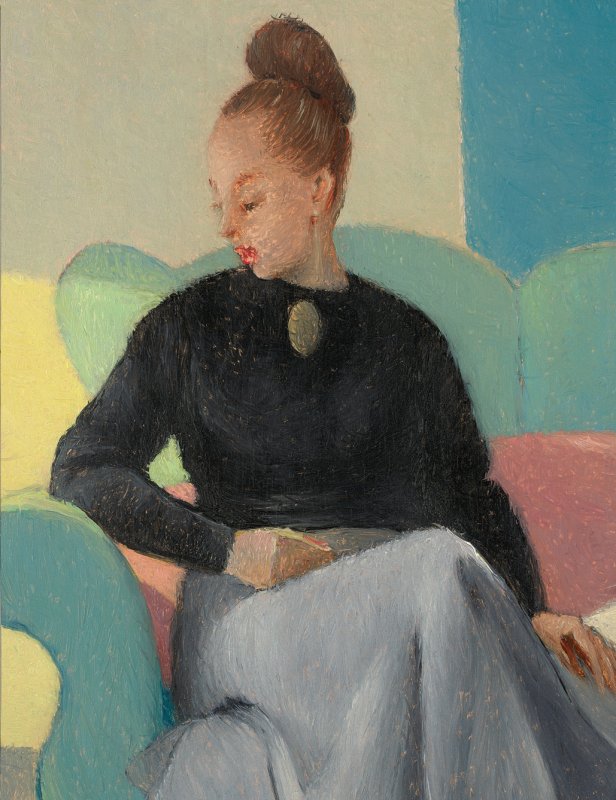»I want to paint the void, the void that is the whole«
The paintings by the northern Italian artist Antonio Calderara (1903–1978) are among the highpoints of twentieth-century subtle painting. Mostly under thirty centimetres wide, their finely nuanced colouration creates a still and poetic magic.

Figura di donna – studio (Female Figure – Studio), 1957
Collection R & B, Munich
Photo: Rupert Walser
“Contemplation, harmony, proportion, stillness; this is the invisible thread that weave my aspiration.”
Antonio Calderara, 1970
The works by the northern Italian artist Antonio Calderara (1903–1978) are among the highpoints of twentiethcentury subtle painting. Mostly under thirty centimetres wide, their finely nuanced colouration creates a still and poetic magic.
The paintings are evidence of a remarkable artistic development. Having broken off his studies of engineering in favour of painting in 1925, the self-taught Calderara created exclusively figurative images until the end of the 1950s: portraits, still lifes and landscapes. His preferred motif was Lake Orta, in Piedmont, where he spent most of his life. Only at the age of 56 did Calderara take the step to abstraction – following his ideal of a ‘restriction of the visual to the very boundary of the natural’. It doesn’t appear to be strictly constructed, but to develop intuitively from the figurative: the light spaces of the late work also contain reminiscences of Mediterranean landscapes.
Calderara’s sumptuous works were last shown in northern Germany at the Kunsthalle Kiel in 1982. Light Spaces now brings together around sixty paintings, largely from private collections, created between 1927 and 1977. Central to the presentation are works from the 1950s and 60s, which enable Calderara’s development to be seen in its quiet consistency and gentle radicalism.
